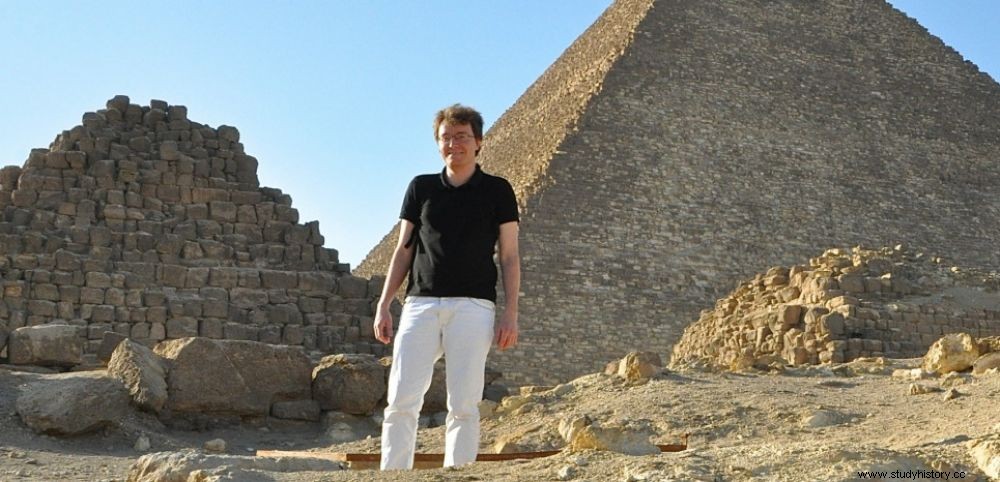Sébastien Prosecutor, scientific manager at Irfu/CEA, is behind the telescopes that will be installed around the Egyptian pyramids. Maintenance.

Sébastien Prosecutor, scientific manager at Irfu/CEA, behind the detector used in Egypt.
Sciences et Avenir:How did the CEA become interested in pyramids?
Sébastien Prosecutor :The story is long but the timing is perfect! In 2012, we were working on a project for the Jefferson laboratory in the United States. The aim was to equip their particle accelerator with a new generation of detectors, the Micromegas - truly made in devices. Saclay, invented here in 96! We therefore developed a test bench to check that they were indeed detecting charged particles – including muons. For this test bench, we had to introduce a modification on the detectors, in order to use much less electronics than usual. And we wanted to test this modification elsewhere than in fundamental physics, for example to "x-ray" objects or buildings. We didn't go very far to do our tests. For four months, we installed a muon telescope next to a water tower located at the CEA center in Saclay. Performance validated! We were able to highlight the architectural details, the body of water inside and its level changes. This experience ended in September 2015. In October, I hear the announcement of the launch of ScanPyramids. I send an email the same evening to Mehdi Tayoubi, the co-director of the mission. We then put together with him and Professor Hany Helal (co-director of the mission in Egypt), the file which was submitted to the Ministry of Antiquities. And here we are on the adventure!
How is your technology different from the emulsion plates installed in the Bent Pyramid by the Nagoya team?
We could draw a parallel with film photography versus digital photography. Emulsions are "silver muography" in a sense. With the advantage of diabolical precision! The grain of the film being extremely fine, it is possible to reconstruct the position of the muons to within a few micrometers. Disadvantage:the emulsions are relatively fragile – that’s why the Japanese installed them inside the monument. Above 25°C, the films are damaged. They are also sensitive to humidity and pressure. Then, as with film photography, you have to wait until the break is over – and it's a long break, several weeks! – before developing the film. As a result, we do not obtain any temporal information:all the muons are integrated for four weeks, and when their trajectory is then reconstructed, it is impossible to know when they passed. The image is frozen.
At the end of May, a third muon sensor technology will join the mission:the Kek scintillator. Again, how do you position yourself in relation to this system?
If we take the analogy with the photo, it is like us digital, image obtained in real time. The advantage of these scintillators is that the technology is old, proven and very robust. It allows to go in hostile environments, it is used in particular in volcanology. It can also cover larger areas than our telescopes. But the major drawback of these instruments is the resolution. In our analogy with photography, the scintillators are a few hundred pixels away, whereas our telescopes work more at several mega-pixels.
Will your detectors "scan" the same structures as the Japanese?
The Japanese detectors will be installed inside the pyramids that have sufficient space. The interest in this configuration is that you can look above your head. And as the flux of muons falls vertically as much as possible, we potentially capture more particles than outside, where we look at an angle, at around 30/40 degrees. On the other hand, outdoors we can obtain a stronger sensitivity in certain areas. Imagine that the Japanese have a 3-meter cavity above them, they must identify it - i.e. measure its difference in density - in 100 meters of rock. While outside, by aiming for the edge of the ridges, we will capture muons that cross only 10 and 20 meters of rock. And if we look for a cavity of 3 meters, the sensitivity will be 10 to 20 times better than inside. Especially since the edges are difficult to see for the Japanese, who only x-ray the pyramid in a 90 degree cone above them. Our techniques will therefore be very complementary!
